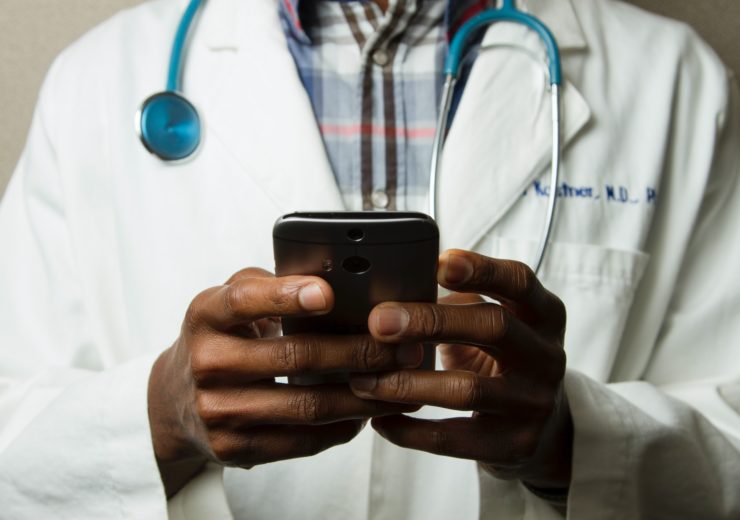AI-driven WiFi networks hold several benefits for clinicians and patients - but the healthcare industry needs the right systems in place to integrate it

AI-driven WiFi can help healthcare professionals locate patients who need attention, or critical medical equipment (Credit: National Cancer Institute)
Uses of artificial intelligence in today’s healthcare settings are expanding all the time. Christian Gilby, director of product marketing at American IT firm Mist Systems, a Juniper Networks company, discusses how AI-driven WiFi can be used to improve day-to-day operations in hospitals and GP surgeries.
Inconsistent WiFi can at best be inconvenient – but, when healthcare systems are relying on always-on networks, it can be life-threatening when they go down.
Many people roll their eyes when they lose connectivity in a coffee shop while they are about to send something important.
Some people also experience their office grinding to a halt because they’re reliant on network connectivity for almost every aspect of their business.
But, in healthcare, there’s a lot at stake when connectivity doesn’t work as it should, so it needs the smartest tools to make sure the network always performs at its best.
Networks are increasingly used to support a variety of medical devices, operations and mobile applications.
Mission-critical takes on new meaning when wireless is supporting medical equipment and real-time data being used by doctors in patient care.
And, increasingly, patient and guest experience is a critical KPI for healthcare IT teams.

AI-driven WiFi in healthcare
Healthcare environments are evolving, not just in the way they are providing dependable WiFi, but also in deploying numerous exciting networking technology advancements.
By doing so, they are improving – and even transforming – both treatment and the modern patient experience.
One of the tools many healthcare providers are investing in is AI-driven networking.
When used in a networking context, artificial intelligence makes WiFi predictable, reliable and measurable.
It can provide healthcare IT teams with visibility and understanding into the real-time network user experience for staff, visitors and patients.
AI also gives IT helpdesk staff the ability to leverage data science tools to proactively identify and resolve issues.
For instance, they can rapidly identify the root cause of a WiFi issue and provide a fix straightaway.
We’re also moving towards IT staff being able to use AI proactively to allow the network to fix itself or identify network anomalies even before users experience a problem.
When a healthcare provider becomes adept at using these tools, they can spend less time troubleshooting and more time focusing on strategic projects.
Leave the systems to operate automatically and provide more intelligent solutions to common problems, while IT staff can dedicate their efforts to innovation that provides the best patient care.
Other benefits of AI networks
Patients, visitors and caregivers alike can also benefit from indoor location services that are enabled by AI-driven networks.
Through a combination of WiFi, Bluetooth LE (low energy) and IoT (Internet of Things) technologies, anyone who has a Bluetooth-enabled device can make use of way-finding services.
This can be helpful in many ways. For instance, healthcare workers can quickly find patients who need attention.
As soon as a visitor arrives at a hospital, they can be greeted and receive turn-by-turn navigation to their destination.
Location services can also help find ‘things’ as well as people.
Staff can become more efficient by being able to locate key assets such as medical devices, wheelchairs or even medicine, which has been a challenge historically with shift-based work.
There’s no more guesswork. Staff now know exactly where important things are, especially in an urgent situation.
Once again, patient services improve because caregivers spend less time searching and more time administering care.
We’re seeing new applications all the time that make use of this integration of Bluetooth, IoT and WiFi.
One healthcare facility, for example, worked with Mist Systems to integrate IoT door locks with Bluetooth LE-enabled badges and tags to prevent unaccompanied patient elopement from their mental health facility.
Different patients have different needs. Implementations such as this can help improve the experience for different subsets of patients, and staff, using AI-driven networks so that specific people can gain access to the zones and services that only apply to them.
Preparations in the healthcare industry
There’s no doubt that AI-driven WLAN (wireless local area network) can bring numerous benefits to an organisation within the healthcare industry.
But, just as the implications of connectivity downtime can be big, the same can also be said if security issues arise through introducing new connected elements to a hospital.
So, is there a risk that new technology can create fresh security challenges? The answer lies in having the right solution and the right management in place.
If properly deployed, WLAN infrastructure can benefit the organisation without sacrificing security standards or contravening compliance.
Security management and threat visibility solutions are available to providers, with some of these integrated as a key component of an AI-driven network to improve security across the network.
This can also help to boost insight, and security, across both the wired and wireless network domains.
Next-generation infrastructure isn’t about giving new toys to the IT team. It’s the beating heart of the digital transformation that is desperately needed across the industry.
It communicates the message that every patient is different and, as such, requires unique experiences and interactions.
Reliable WiFi has become an expectation for patients and visitors.
To provide this expected level of service, it requires a lot of innovation under the hood.
It also provides the backbone on which healthcare organisations can build a modern hospital environment with AI-driven WLAN to truly transform the modern patient experience and take connected healthcare to the next level.
